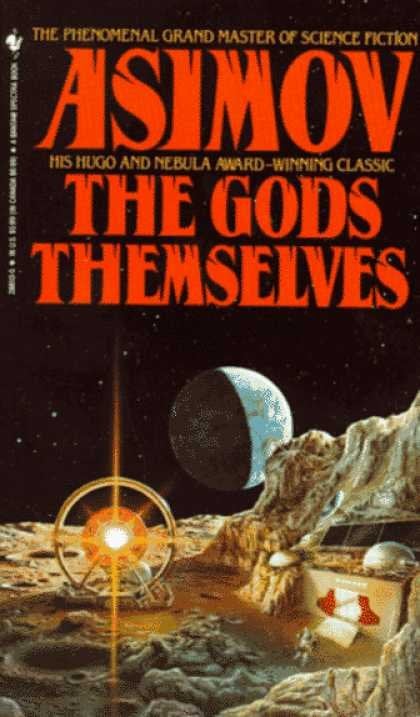Gateways To Parallel Universes: Opening Doors To Places Where The Gods Themselves Reside
Cynthia McKanzie – MessageToEagle.com – In his classical science fiction book, The Gods Themselves, 1973’s Hugo Award-winning novel, Isaac Asimov discusses the intriguing many worlds theory.
Asimov boldly asks if an infinite number of universes can exist, then is life possible in any of these universes with different physical laws?
In The Good Themselves, Asimov relates a story of how humanity discovers a source of unlimited, free energy.
Many years before this important discovery, human are contacted by a superior extraterrestrial race that resides in a parallel universe.
In this parallel universe the fundamental laws of physics differ from the laws of our own. For example, the strong nuclear force is much stronger in the parallel universe than in ours.
As the story continues, the humanity and the neighboring extraterrestrials examine different opportunities to open up gaps in the fabric between our universes, so that excess electrons would leak from theirs into ours and excess positrons would leak from ours into theirs.
Humanity believes that is it possible to use the strange alien plutonium-186 that gives off large amounts of energy in the form of electrons. If so, it can be harnessed to give fabulous amounts of free energy and finally solve our world’s energy crisis. The alien on other hand, have a very different agenda. Their universe is dying. By setting up an exchange, they hope that they can save their dying world. Soon Earth is headed for a disaster.
Not only is The God Themselves a good science fiction book, but the plot also raises the question the inevitable question: Are parallel universes consistent with the laws of physics?
It is difficult to discuss the laws of physics without firm evidence that can prove the existence of a multiverse, many physicists say. Who knows, perhaps the Large Hadron Collider will one day confirm the existence of parallel universes.
The natural laws are different in our own Universe, studies have shown. One of the laws of nature may vary across the Universe, according to research carried out at the University of New South Wales (UNSW), Swinburne University of Technology and the University of Cambridge.
The study found that one of the four known fundamental forces, electromagnetism – measured by the so-called fine-structure constant and denoted by the symbol ‘alpha’ – seems to vary across the Universe.
The first hints that alpha might not be constant came a decade ago when Professor John Webb, Professor Victor Flambaum, and other colleagues at UNSW and elsewhere, analysed observations from the Keck Observatory, in Hawaii. Those observations were restricted to one broad area in the sky.
However, now Webb and colleagues (PhD graduate Dr Julian King, PhD student Matthew Bainbridge and Professor Victor Flambaum at UNSW; Dr Michael Murphy at Swinburne University of Technology, and Professor Bob Carswell from Cambridge University) have doubled the number of observations and measured the value of alpha in about 300 distant galaxies, all at huge distances from Earth, and over a much wider area of the sky. The new observations were obtained using the European Southern Observatory’s ‘Very Large Telescope’ in Chile.
“The results astonished us,” said Professor Webb. “In one direction – from our location in the Universe – alpha gets gradually weaker, yet in the opposite direction it gets gradually stronger.”
“The discovery, if confirmed, has profound implications for our understanding of space and time and violates one of the fundamental principles underlying Einstein’s General Relativity theory,” Dr King added.
“Such violations are actually expected in some more modern ‘Theories of Everything’ that try to unify all the known fundamental forces,” said Professor Flambaum. “The smooth continuous change in alpha may also imply the Universe is much larger than our observable part of it, possibly infinite.”

“Another currently popular idea is that many universes exist, each having its own set of physical laws,” Dr Murphy said. “Even a slight change in the laws of Nature means they weren’t ‘set in stone’ when our Universe was born. The laws of Nature you see may depend on your ‘space-time address’ – when and where you happen to live in the Universe.”
Professor Webb said these new findings also offer a very natural explanation for a question that puzzled scientists for decades: why do the laws of physics seem to be so finely-tuned for the existence of life?
“The answer may be that other regions of the Universe are not quite so favorable for life as we know it, and that the laws of physics we measure in our part of the Universe are merely ‘local by-laws’, in which case it is no particular surprise to find life here,” he said.
Some scientists believe they have already found the first evidence of parallel universes.
There are those who say it is vital to research parallel universes as these can serve as future survival places for species that try to avoid the inevitable death of our own Universe.
One of the most depressing passages in the English language was written by Bertrand Russell, who described the “unyielding despair” he felt when contemplating the distant future:
“No fire, no heroism, no intensity of thought or feeling, can preserve a life beyond the grave… all the labours of the ages, all the devotion, all the inspiration, all the noonday brightness of human genius, are destined to extinction in the vast death of the solar system; and the whole temple of man’s achievement must inevitably be buried beneath the debris of a universe in ruins.”.
Russell wrote this passage in an era before space travel.

To many of us the death of the sun does not seem so catastrophic today, but the death of the entire universe seems inescapable.
Some day in the distant future, the last star will cease to shine, and the universe will be littered with nuclear debris, dead neutron stars and black holes. Intelligent civilizations, like homeless people in rags huddled next to dying campfires, will gather around the last flickering embers of black holes emitting a faint Hawking radiation. Is this end? Does it have to be the end?
It is true that all life must end and even the most advanced civilizations will not be able to avoid the moment when our Universe will one day end in a “big freeze”, the so-called Heat Death, or perhaps the “Big Crunch”.
Maybe, Isaac Asimov idea that advanced extraterrestrial species can inhabit a parallel universe was not so far-fetched after all. Perhaps even the “gods themselves” must one find away to avoid the final destruction of their Universe by escaping to a parallel world.
Copyright © MessageToEagle.com. All rights reserved. This material may not be published, broadcast, rewritten or redistributed in whole or part without the express written permission of MessageToEagle.com
Related Posts
-
 Is There Anything I Can Do To Keep My Brain Healthy In Older Age?
No Comments | Feb 14, 2016
Is There Anything I Can Do To Keep My Brain Healthy In Older Age?
No Comments | Feb 14, 2016 -
 Researchers Confirm Place On Earth Where There Is No Life
No Comments | Nov 23, 2019
Researchers Confirm Place On Earth Where There Is No Life
No Comments | Nov 23, 2019 -
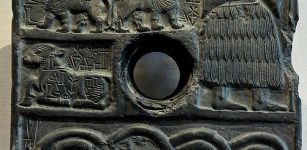 Babylonian Story Of Bird-God Anzu ‘The Wise One’ And His Underworld Realm
No Comments | Dec 10, 2016
Babylonian Story Of Bird-God Anzu ‘The Wise One’ And His Underworld Realm
No Comments | Dec 10, 2016 -
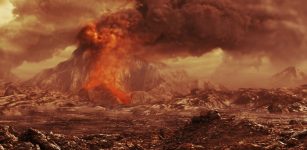 What Would Really Happen If We Tried To Send Humans To Venus?
No Comments | Sep 11, 2017
What Would Really Happen If We Tried To Send Humans To Venus?
No Comments | Sep 11, 2017 -
 Solar Weather Has Real Material Effects On Earth
No Comments | Jul 14, 2019
Solar Weather Has Real Material Effects On Earth
No Comments | Jul 14, 2019 -
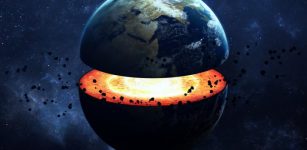 Mysterious Structure Discovered In Earth’s Inner Core Can Re-Write Science Textbooks
No Comments | Mar 9, 2021
Mysterious Structure Discovered In Earth’s Inner Core Can Re-Write Science Textbooks
No Comments | Mar 9, 2021 -
 Gluskap: Mythical Hero Who Defeated Evil Sorcerers And Demon Followers
No Comments | Jan 25, 2016
Gluskap: Mythical Hero Who Defeated Evil Sorcerers And Demon Followers
No Comments | Jan 25, 2016 -
 Is Wonder-Child Ramses Sanguino A Real Telepath?
No Comments | Nov 8, 2015
Is Wonder-Child Ramses Sanguino A Real Telepath?
No Comments | Nov 8, 2015 -
 Mysterious Dark Watchers – One Of America’s Greatest Ancient Riddles
No Comments | Nov 13, 2014
Mysterious Dark Watchers – One Of America’s Greatest Ancient Riddles
No Comments | Nov 13, 2014 -
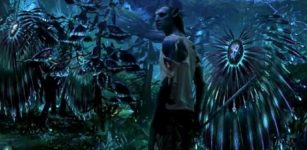 Unusual Organisms Living On Pandora – A Fictional Alien World That Could Be Real
No Comments | Oct 27, 2015
Unusual Organisms Living On Pandora – A Fictional Alien World That Could Be Real
No Comments | Oct 27, 2015

